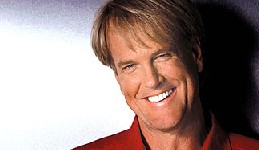This is a public service announcement.
Avoid the Fiery Furnaces live.
In the studio, the Fiery Furnaces are perhaps one of the more interesting White Stripes-style experimenters working today. But as a live band, they are about as tedious as a snare-bass backbeat that goes on without variation for six hours. Their drummer is an imbecile who seems to be under the mistaken impression that his six crappy fills, repeated ad nauseum, and his relentless pounding make him today’s answer to Keith Moon. The man beat so hard on his setup that his drum stands were constantly shifted out of shape, leaving him to constantly readjust them between songs. I suspected that he was either a last-minute replacement or a friend of a friend who happened to like drumming.
Singer Eleanor Friedberger, whose spastic stage presence resembled a speed freak who needed to be told bluntly that music was not a solid career choice, seems to be under the false impression that belting out all of her lyrics in a rapid and indecipherable clip makes for innovation. And Matthew Friedberger believes that turning his keyboard up as loud as possible, where notes are strained beyond recognition through a muddled sound mix, is the stuff that concerts are made of. This band is not tight. They are tone deaf and not in a good and carefully honed way a la Sonic Youth. Ms. Friedberger continuously sang in different keys than the band was playing. It made me sad, and it made me embarassed for them.
These people are not fun at all, nor do they appear to be having fun. In which case, why even bother to tour?
What’s worse is that the Fiery Furnaces have adopted an odd strategy that involves playing every one of their songs, if you can call an excerpt ranging from thirty seconds to two minutes a song, in a continuous and uninterrupted flow. This renders “I Lost My Dog,” for example, as a two-minute segment cast within an interminable garage band groove or “Bird Brain” as something played in the same tempo: too fast, too abbreviated, and sadly devoid of its original character.
I’ve heard garage bands sound better than these folks. Years ago, I recall seeing some terrible stoner band in Sacramento (name deliberately withheld) who insisted on playing long nine-minute songs — all in the same tempo, all with a tedious and rudimentary cast. I never thought for a moment that the Fiery Furnaces would top them as one of the worst concertgoing experiences of all time. And the sad thing was that I was very familiar with the Fiery Furances’ music.
Other goofball studio-reliant bands I’ve seen live (say: Of Montreal) at least understand that reproducing or transposing production-heavy songs live involves ingenuity and careful rehearsal. It’s a pity that the Fiery Furnaces would rather throw away an opportunity to stumble upon unexpected moments of innovation. It’s truly a disappointment, given the wild ideas and influences they’re willing to throw into their albums.
Oh well. At least Dios Malos was good.
 Seattle Post-Intelligencer: “But after a career in television news and sports and as a musician recording albums and performing concerts, Tesh is back on radio in earnest. He is host of a nationally syndicated show heard on more than 200 stations around the country.”
Seattle Post-Intelligencer: “But after a career in television news and sports and as a musician recording albums and performing concerts, Tesh is back on radio in earnest. He is host of a nationally syndicated show heard on more than 200 stations around the country.”